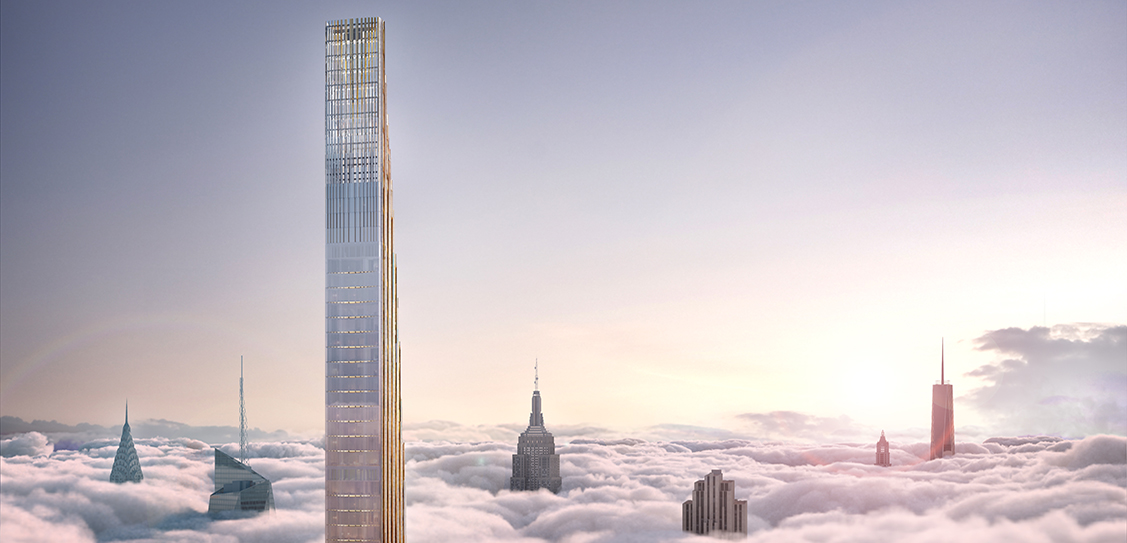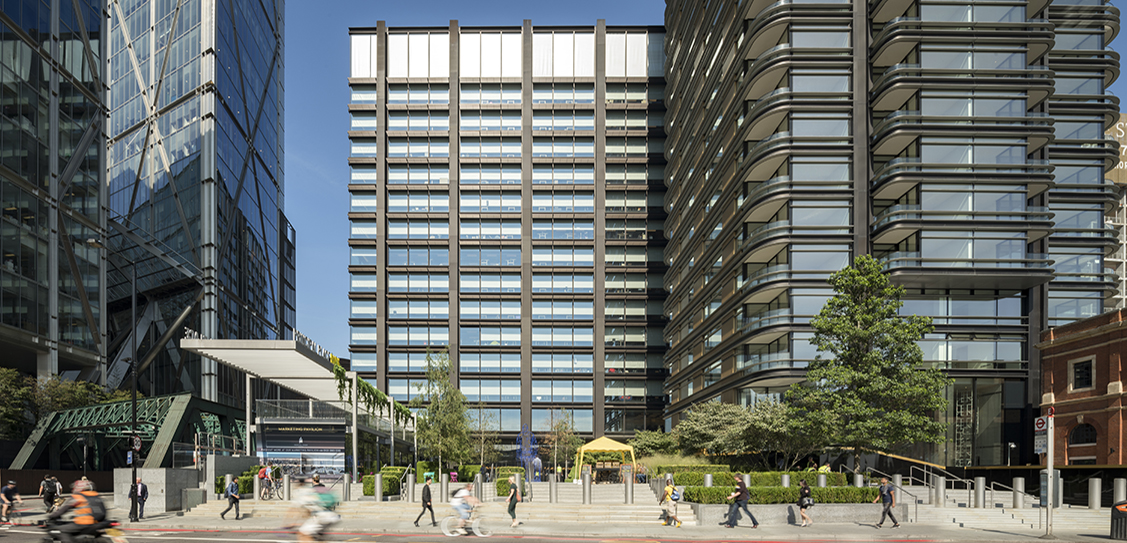Second tallest residential building in the Western Hemisphere built in New York
Supertall lives up to its name, designed by SHoP Architects and BuroHappold and located on 111 West 57th Street in Manhattan, US.
Supertall tower is receiving acclaim for its incredible height, its slenderness, and its intricate terra-cotta, glass, and bronze façade engineered by BuroHappold and situated overlooking Central Park.
Recently topped out as the second-tallest residential building in the Western Hemisphere, the 91 story, 1,428ft tall tower has a width-to-height ratio of only 1:24. One of the project’s key challenges lay in developing a facade system capable of supporting the weight of nearly 43,000 individual terra-cotta pieces on the building’s east and west elevations.
Two towers ‘coalesce into a cube’ for ME Dubai hotel at the Opus from Zaha Hadid Architects
Home to the new ME Dubai hotel, the Opus is located in the Burj Khalifa district adjacent to Downtown Dubai and Business Bay on the Dubai Water Canal.
Spanning 84,300 square metres, the Opus was designed as two separate towers that coalesce into a singular whole—taking the form of a cube.
The cube has been ‘eroded’ in its centre, creating a free-form void that is an important volume of the design in its own right.
The two halves of the building on either side of the void are linked by a four-storey atrium at ground level and also connected by an asymmetric 38 metre wide, three-storey bridge 71 metres above the ground.
Rainbow Tree ‘organic tower’ by Vincent Callebaut Architectures in the Philippines
The 32-story, modular mass timber condominium tower is 115-metre high tower built of solid wood in Cebu City.
The objective of The Rainbow Tree is to construct a residential building with double environmental certification which offers the perfect balance between mixed cultural heritage and natural heritage.
Vincent Callebaut Architectures designed this 32-story, 115-metre high tower built of solid wood – the only natural, abundant, and renewable material.
The “organic tower” integrates the principles of passive green tech and advanced renewable energies.
It was named “The Rainbow Tree” because it is an ode to Eucalyptus Deglupta, also known as Rainbow Eucalyptus, an iconic and colourful tree from the Philippines.
The tower is adorned with more than 30,000 plants, shrubs and tropical trees draw a flourishing spiral in the colours of the rainbow in the heart of Cebu Business Park which is mainly built of concrete and steel.
Quadrangle partners with Herzog & de Meuron’s first tower design in Toronto
Kroonenberg Groep and ProWinko unveil new 87 storey tower design for mink mile, sited at the corner of Bay and Bloor.
With a 3:1 ratio in the north-south orientation, a simple extrusion of the site footprint rises 87 storeys, resulting in an elegant, well-proportioned tower volume. A linear core at the western façade is proposed which maximises the usable area of the floorplate, the aspect over Bay Street to the east, and simultaneously provides privacy from any adjacent development to the west.
At street level, residents enter a triple-height lobby from Bloor Street and take one of four dedicated lifts to their condo level. Residences will range from one bedroom, to multi-level penthouses, totalling 332 condominium units spread over 64 floors.
Pekuliari the first of its kind in the world
As you head towards the Pekuliari reserve, a mirage appears in the middle of the boreal forest. This improbable and amazing vision seems to emerge from the ground. Unique in its kind, this tower culminates more than 200m high in this hilly Quebec landscape. Evoking a totem or a stone cairn in Quebec territory, Pekuliari is an eloquent example of paleo-futurism. Resembling a lithic structure from immemorial times, the materials and the refinement of its details make it a building of a still distant future.
Its familiar appearance of a large stack of eroded rocks is complemented by a skin that has an appearance recalling the mineral and vegetal character of the surrounding nature. This irregularly shaped exoskeleton structure gives the envelop an organic and cellular aspect that contrasts with the crystalline glass façade underneath. Composed with multiple toned glass panels, the façade shimmers under the sun. Designed with the latest parametric architecture technologies, this envelope gives the 48-story tower an out of the ordinary sculptural look.
Foster + Partners designs Principal Tower, one of the tallest in London
The completion of Principal Tower is the final piece of the Principal Place masterplan, a comprehensively planned mixed use scheme on the border of Shoreditch and the city of London that creates a thriving new neighbourhood, drawing on the rich industrial heritage of the area. It comprises a 15 storey office building that hosts the London headquarters for Amazon, alongside one of London’s tallest residential buildings, the 50 storey Principal Tower, with six eateries that wrap around the building at street level and a light bar, creating a 360° active frontage that extends the vibrancy of the city towards the north.
The relationship between the creative, formerly industrial east end and London’s financial centre is expressed in the tower’s massing, which appears as three slim volumes. Where the tower addresses the residential neighbourhood of Shoreditch, it appears lower from ground level, while from the west it reflects the high rise nature of the city. A central volume rises up between the two to provide an elegant marker on the skyline.



